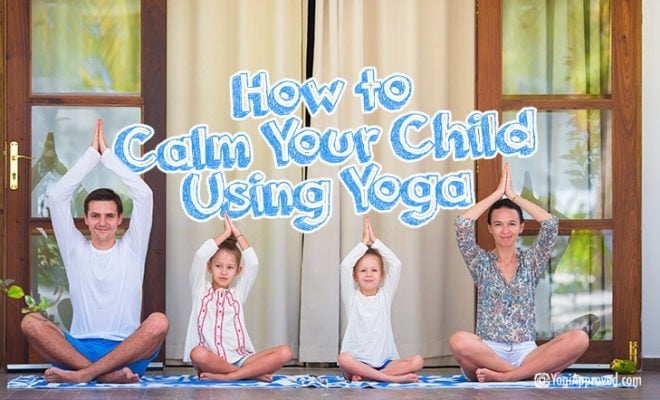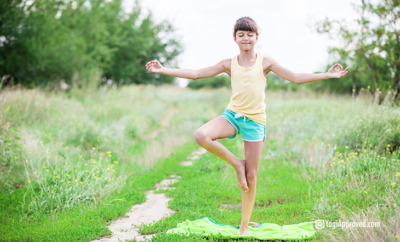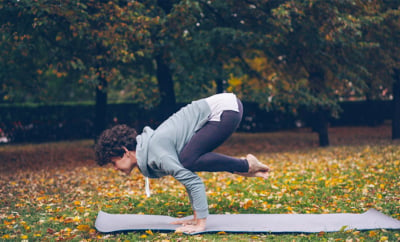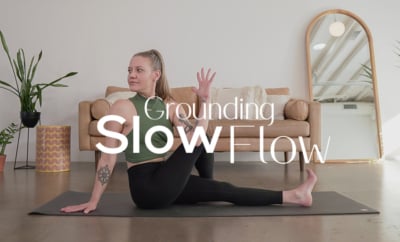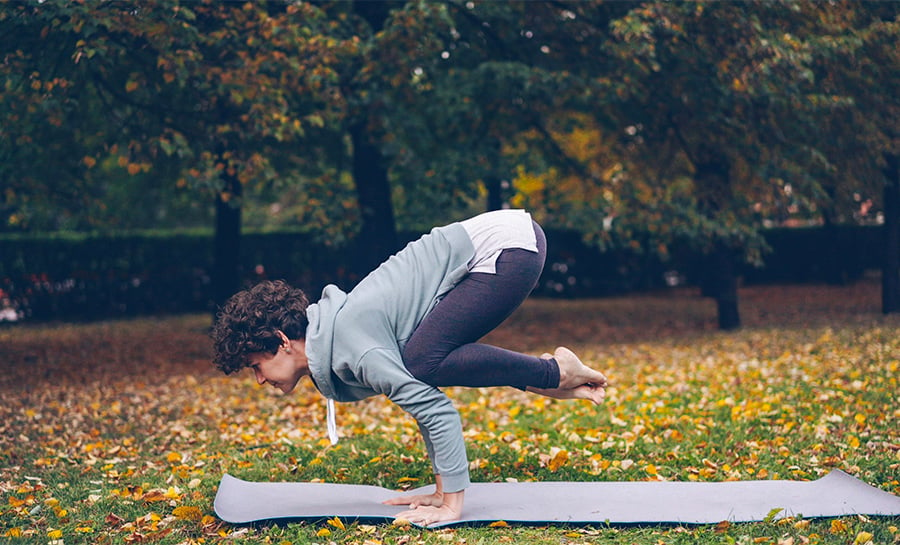Kid’s Yoga: 4 Yoga Techniques to Help Your Child Relax and Unwind

kids and yoga
As you may have already discovered with yoga, what’s good for the grown-up is also good for the kids. Studies have shown the profound and positive impact yoga can have on a young life. Studies have also shown that a yoga practice can help develop a more calm and mindful child.
Kid’s yoga is a powerful tool for high-energy children, when a child is upset, or simply for the kids who need some time to relax or decompress. The following tips and tricks will help calm a child’s mind and body.
Here are 4 ways to help your child relax using kid’s yoga and yoga-based techniques:
1. Help Your Child Relax with a Singing Bowl
Singing bowls are a great way to get your child to focus on one particular activity that brings with it a lot of benefits. A singing bowl (also referred to as a Tibetan bowl) plays at a certain frequency which in turn can help cultivate mental focus, presence, and calm.
Here’s a simple and fun relaxation exercise can be done with a singing bowl:
- First, while the child is relaxing, just place the bowl on their stomach and ring it softly
- Ask them to listen for the sounds of the bowl and feel the vibration as it rings
- Then, give them a turn and let them play it and explore the sounds for themselves
This activity works well because the kids listen intently for the bowl to stop making a sound, which helps focus their attention. The kids often want to do it over and over and after a few times, they can do it with their eyes closed which is even more relaxing. As their mind becomes focused on the simple task of listening for the sound, it will become increasingly calm and relaxed.
In addition to the calming and soothing effects of the singing bowl exercise, the kids also have to wait patiently and quietly for their turn. Singing bowls are relatively inexpensive and easy to find online, such as this one.
2. Teach Your Little Yogi Ujjayi Breathing
The simple act of Ujjayi breathing (or Ujjayi Pranayama) that adult yogis might know from yoga class also works nicely for relaxing children. There are many forms of Pranayama, or conscious breathwork, and all have many positive benefits for mind and body.
Here’s a simple step-by-step method for teaching Ujjayi Pranayama to kids:
- Sit in a comfortable cross-legged seat (you can ‘jazz it up’ by calling it criss-cross applesauce)
- Start by sighing in and out through the mouth. This is a natural calming mechanism and the simple act of sighing will start things off right
- Ask your child how the sigh makes them feel, and then have them focus on the spot at the top of the throat that feels sort of cold on the inhale. That is the spot that we are going to try to breathe from when we close our mouths
- Next, tell the child to close their mouth. Ask them to see if they can breathe long, slow breaths – like a sigh – with the mouth closed
- At this point, their breathing should be audible and will sound like ocean waves – or Darth Vader. ☺
The sound of Ujjayi is reminiscent of the ocean flowing (which is why this form of Pranayama breathing is often referred to as “Ocean Breath.” The inhale and exhale should make the same sound. As a part of meditation, a child can practice Ujjayi in a seated position for about 2-5 minutes, depending on age and focus.
Ujjayi breathing does not require sitting or closing the eyes. It can be done to calm down or when your child is feeling angry, frustrated, or overwhelmed. The more a child practices Ujjayi, the more they learn to use it as a go-to technique anytime they need a little help calming down. What an amazing gift to give your child early in life!
Curious about more forms of Pranayama that you can teach your little yogi? Check out How to Teach Kids 5 Pranayama Techniques
3. “Take 5” Finger Breathing
This one works well for my child – I know from personal experience! It’s so easy and well worth a try if you have a ‘spirited’ kiddo like I do, who might at times struggle to settle down at the end of the day. I’ve even spotted her doing it on her own as she gets ready for bed at night.
Here’s how to practice “Take 5” Finger Breathing:
- Ask your child to hold up their hand and trace their fingers from the thumb to the pinky (or in reverse) with the other hand
- As they trace up the finger, tell them to inhale deeply
- Then, as they trace down the finger, tell them exhale slowly
You can have your child repeat this several times if they’d like. Often, by the time the child reaches the last finger on the first round, they’re already noticeably calmer and more relaxed. So simple, yet so effective! This is an excellent, easy form of breathing that helps children unwind – perfect before bed.
4. Sun Salutations for Kids
When your kiddo is not in the mood to sit or breathe slowly, try leading them through a simple sun salutation. It doesn’t have to be perfect, but the easy movements of stretching and bending can help calm the mind, too.
If they are still distracted, ask them to help you name the poses as you move through each one. The methodic act of going through the same series of poses (especially saying the name of each pose as they go) helps your child focus, feel more centered, and calm overall as a result. Feel free to repeat this several times through, or until your little yogi begins to calm down.
Want a fun yet relaxing yoga flow you can practice with your kiddo? Check out this calming Yoga for Kids video
Give Your Kid the Gift of Children’s Yoga
As yogis, we are already aware of the immense relaxing and calming benefits of yoga. What an amazing opportunity to share this special gift with your child. You might find that building one or two of the suggested practices into the day around bed time, or perhaps after school to decompress, makes transitioning to the next part of the day smoother and more relaxing for everyone.
Give these tips a try with your little ones and let us know what you think in the comments below. Or, comment with a kid’s yoga tip that works for you – we love hearing from you!


This Month's Letter
From the Editor
Monthly motivation and food for
thought from our founder.

